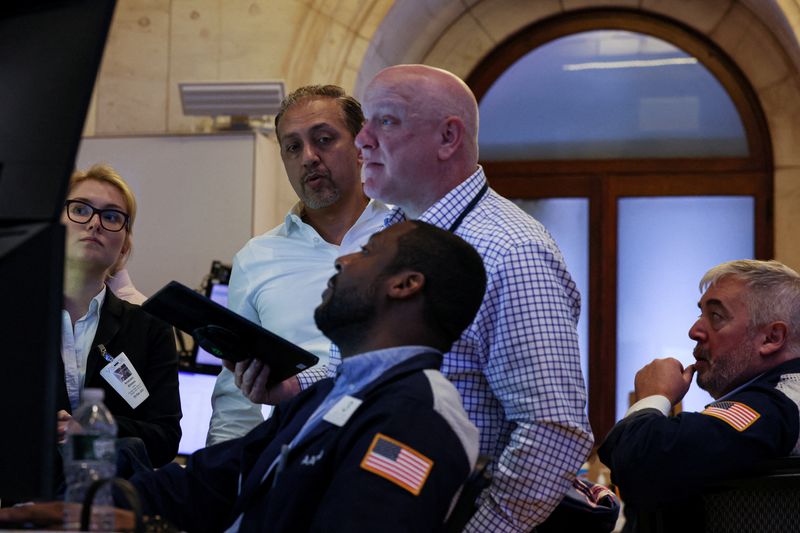A look at the day ahead in U.S. and global markets from Mike Dolan
Despite a tentative pushback from central banks against what some see as excessive interest rate cut bets for next year, U.S. markets retained the warm holiday glow of credit easing ahead - with one wary eye on the Bank of Japan.
The BOJ is the last of the G4 central banks to make its final 2023 policy decision this Tuesday - and also the most out of step. Far from the rate cut nods and winks from the Federal Reserve and others last week, there's still an outside chance the BOJ could tighten monetary policy this week.
While most see an exit from negative interest rates delayed as far away as April, the central bank has been tweaking its yield curve caps all year, could nuance those again and pressure from business lobbies to 'normalize' policy soon is building.
That background risk kept a pall over Japanese stocks on Monday and Asia bourses were lower more broadly - amid yet another slide in Chinese and Hong Kong indexes. The yen, which surged on the dollar last week on the burst of Fed easing hopes, fell back a touch today however.
And yet, fresh from notching their longest weekly winning streak in six years last week, and either at or within a whisker of record highs, Wall St stock futures looked to sustain the momentum into the new week.
Despite Fed officials attempts on Friday to dampen market easing bets, futures markets are still gunning for as much as 150 basis points of rate cuts in 2024 starting as soon as March - twice what Fed policymakers indicated last week.
New York Fed boss John Williams said it was premature to be talking about rate cuts yet. Atlanta Fed chief Raphael Bostic told Reuters he saw no easing until the third quarter and only two rate cuts all year.
And yet the optimism is hard to contain, with the latest economic readouts showing a mixed picture of manufacturing and industry.
Ten-year Treasury yields plumbed below 3.90% early on Monday, some 34bps lower compared to this time last week. Two-year yields at 3.4% are down more than 30bps over the past week too.
A big week for U.S. housing data kicks off with the NAHB U.S. homebuilder December survey on Monday, with eyes also on PCE inflation updates and a 20-year Treasury bond auction.
There was similar picture in Europe, where markets are also betting on 150bps of European Central Bank easing next year - starting in April - and 10-year bund yields are testing 2% for the first time since March.
Even though German business morale unexpectedly worsened in December, according to the Ifo institute's latest survey, ECB officials have aped their Fed counterparts by prodding markets away from assuming rate cuts before midyear.
ECB policymaker and Slovenia's central banker Bostjan Vasle doubled down on that message on Monday and said the ECB will need at least until spring before it can reassess its policy outlook and that market expectations for an interest rate cut in March or April are overdone.
The euro was a little higher on Monday as a result. The dollar was mixed more broadly - with speculators net positioning on the dollar versus G10 currencies turning negative for the first time since September.
Crude oil prices were lower amid generalised global demand concerns and despite more shipping worries in the Red Seas.
Key developments that should provide more direction to U.S. markets later on Monday:
* NAHB Dec housing index, New York Fed Dec service sector survey
* Chicago Federal Reserve President Austan Goolsbee; European Central Bank chief economist Philip Lane, ECB board member Isabel Schnabel all speak

* U.S. Treasury auctions 3-, 6-month bills
* U.S. corporate earnings: Ark Restaurants, Quipt Home Medical